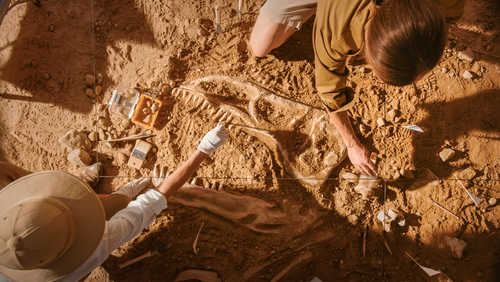(RoyalPatriot.com )- Researchers analyzing a small dinosaur fossil discovered over twenty years ago found the remains of the fossil’s food hiding undetected in its ribcage.
Researchers from the Queen Mary University of London say they found the foot of a tiny mammal about the size of a mouse within the rib cage of the fossilized dinosaur. According to a statement from the university, this is only the second recorded direct evidence of a dinosaur consuming a mammal.
The findings were published on December 20 in the Journal of Vertebrate Paleontology.
David Hone, a paleontologist at Queen Mary University said in the statement that while the creature found in the dinosaur’s stomach was a mammal, it was not an ancestor of humans. However, the findings do suggest that the ancient relatives of humans could have been a food source for dinosaurs, Hone added.
The dinosaur, Microraptor zhaoianus, was about the size of a modern-day crow. It had long feathers on its arms and legs and likely hunted by gliding from one tree to another searching for small animals to consume.
According to the researchers’ analysis, the small mammal in its belly possibly spent most of its time on the ground, making it the perfect prey for the tree-dwelling Microraptor.
While the mammal’s identity is unknown, the researchers found that its bones are similar in structure to several known ancient mammals that resemble mice or opossums.
Hans Larsson, a paleontologist from McGill University and the lead author of the study, told Gizmodo that the mammal was likely swallowed whole since the foot appears completely intact.
Discoveries like this are crucial in advancing scientists’ understanding of prehistoric predation as finding physical evidence of a dinosaur’s diet isn’t easy to come by.
Paleontologist Stephanie Drumheller-Horton from the University of Tennessee in Knoxville told Gizmodo that finding the “gut contents” of a fossilized animal is “so rare that it can be difficult to figure out whether the preserved ‘last meal’ represents” its “normal diet or a weird, one-off event that lucked into getting fossilized.”


















